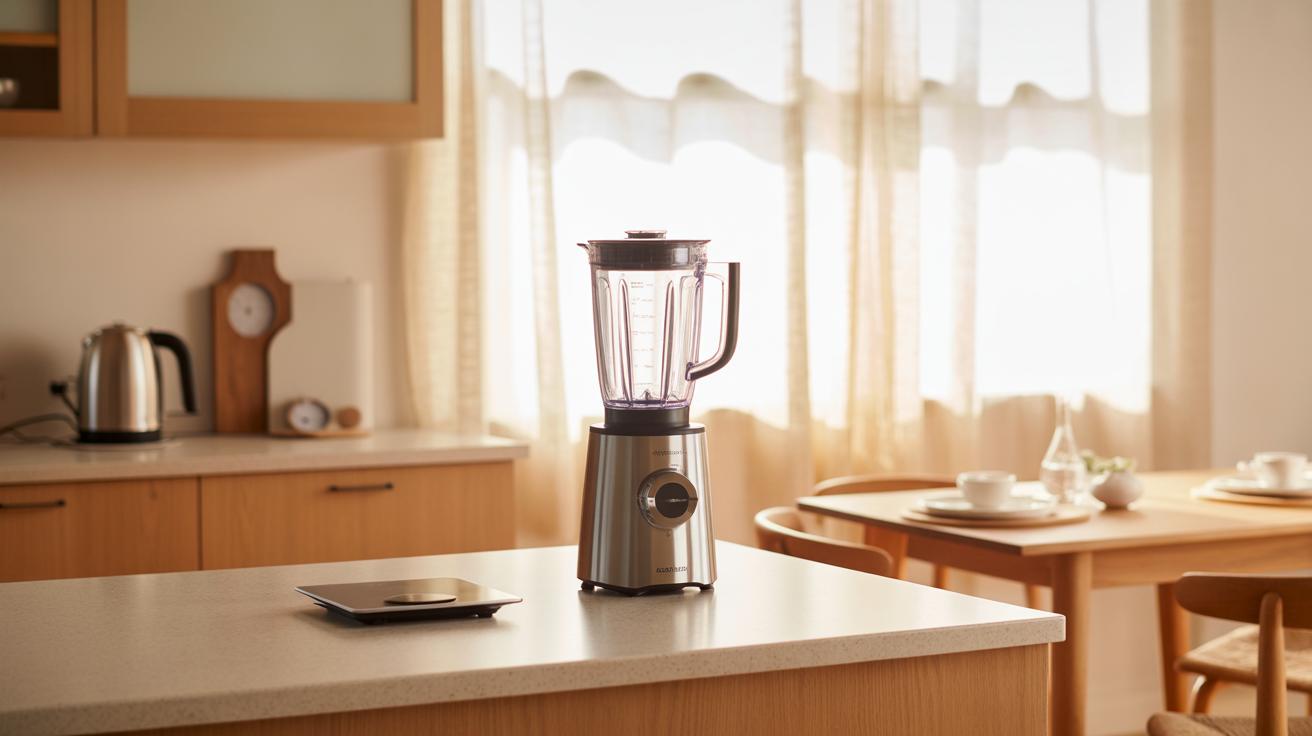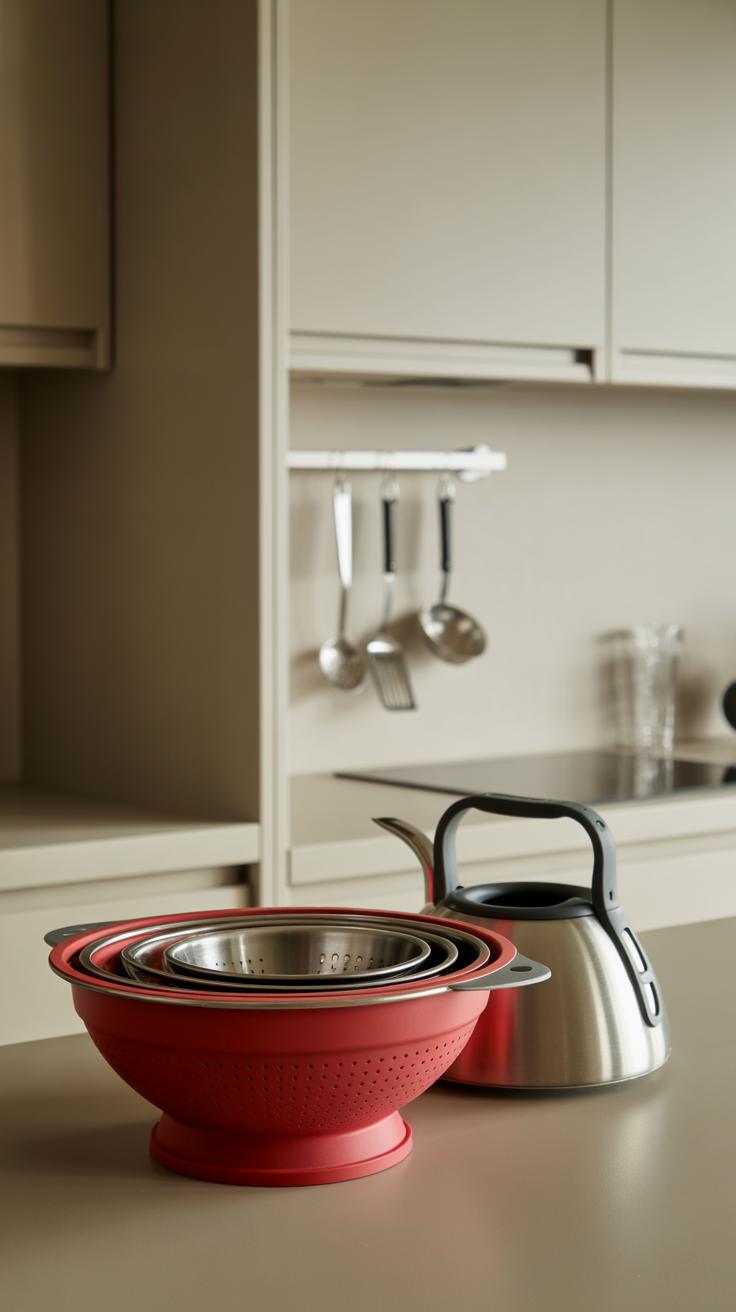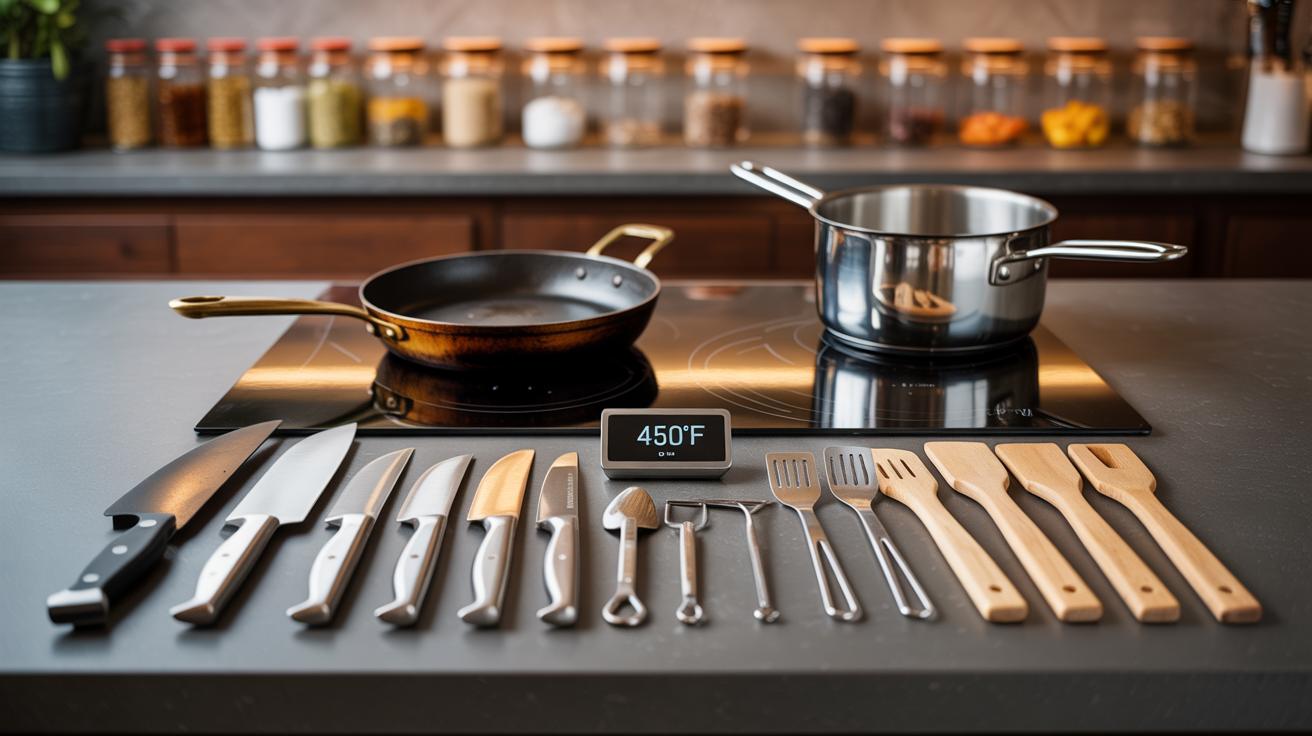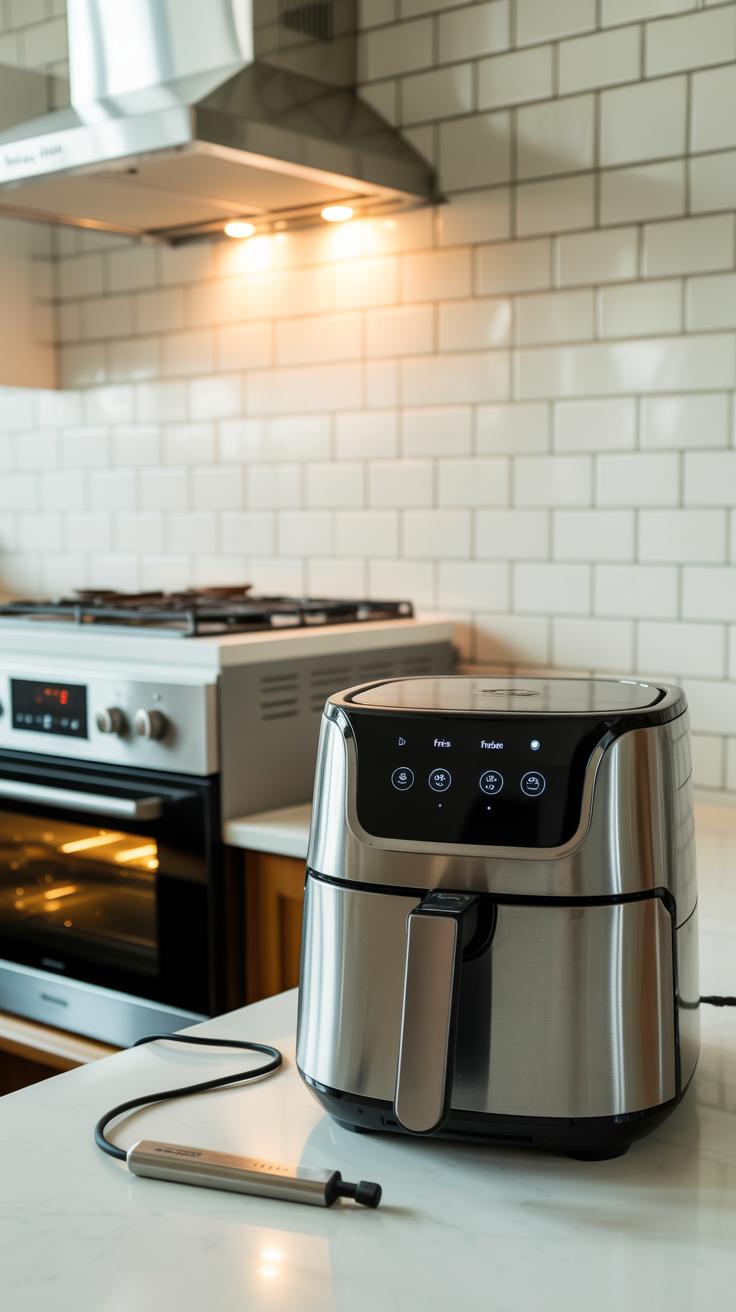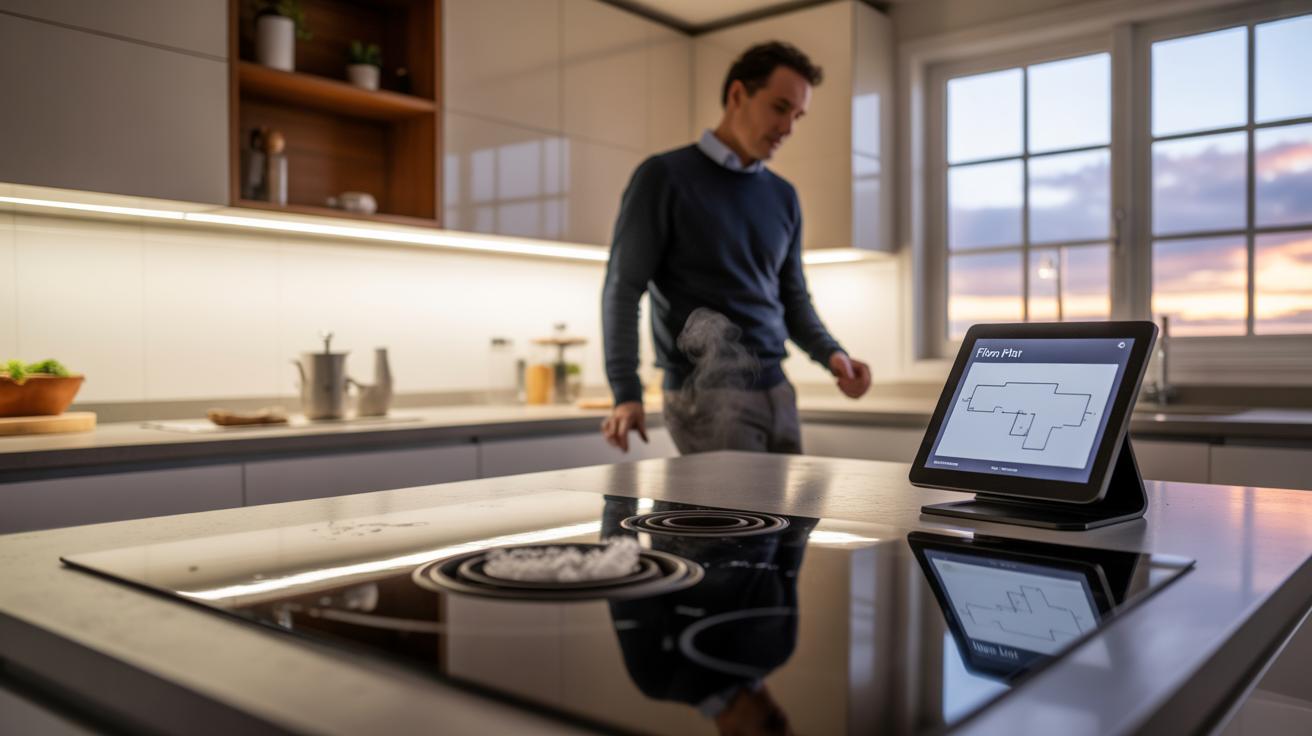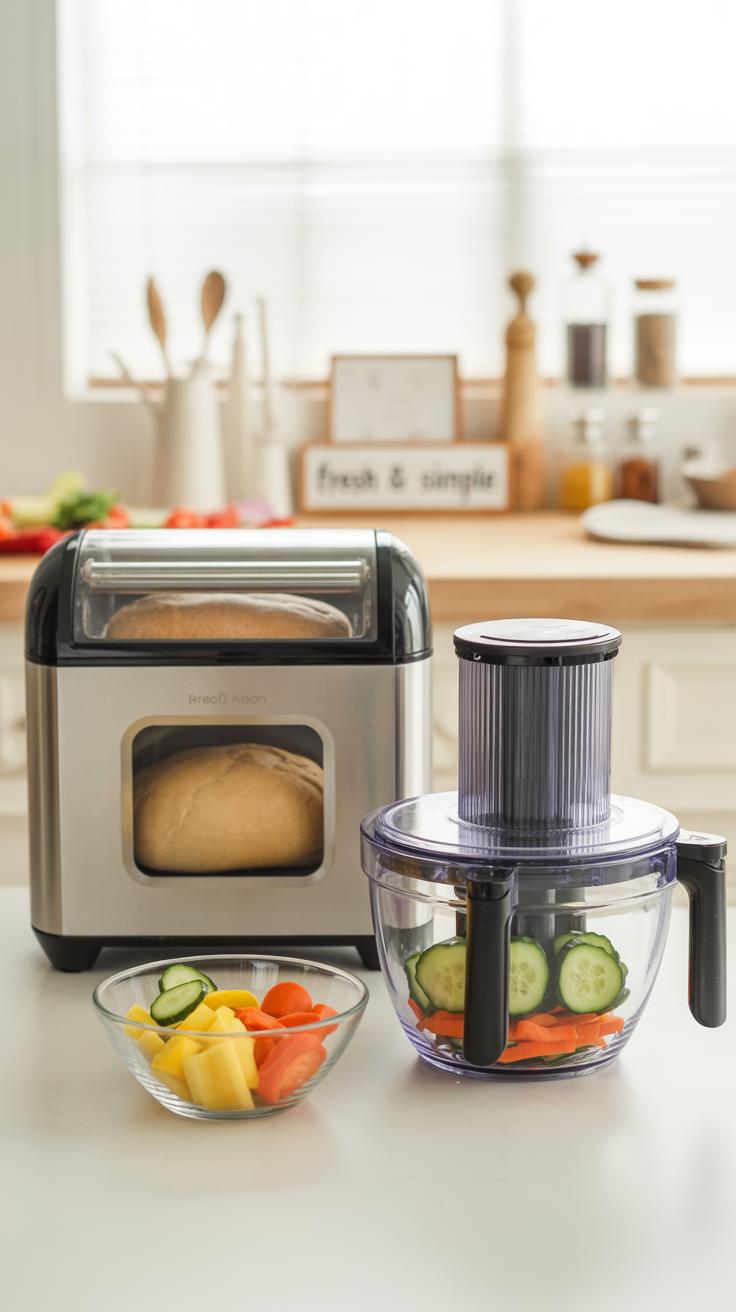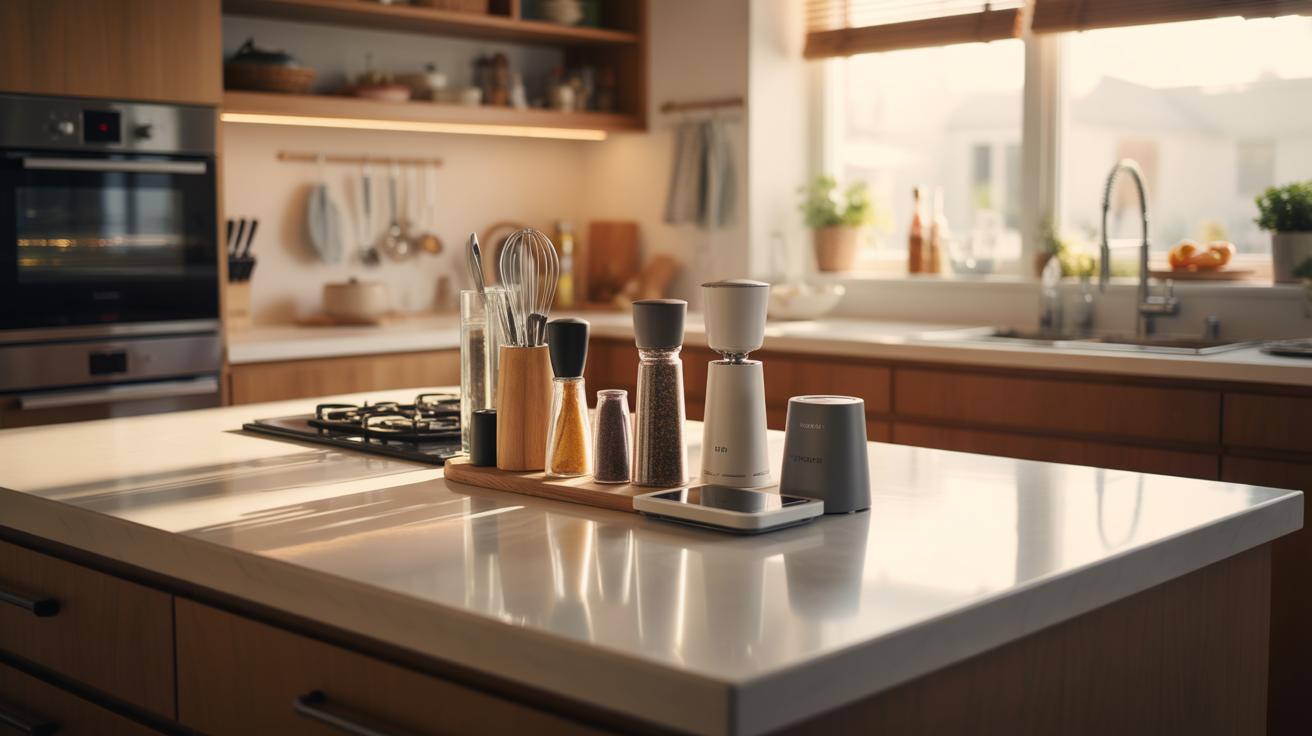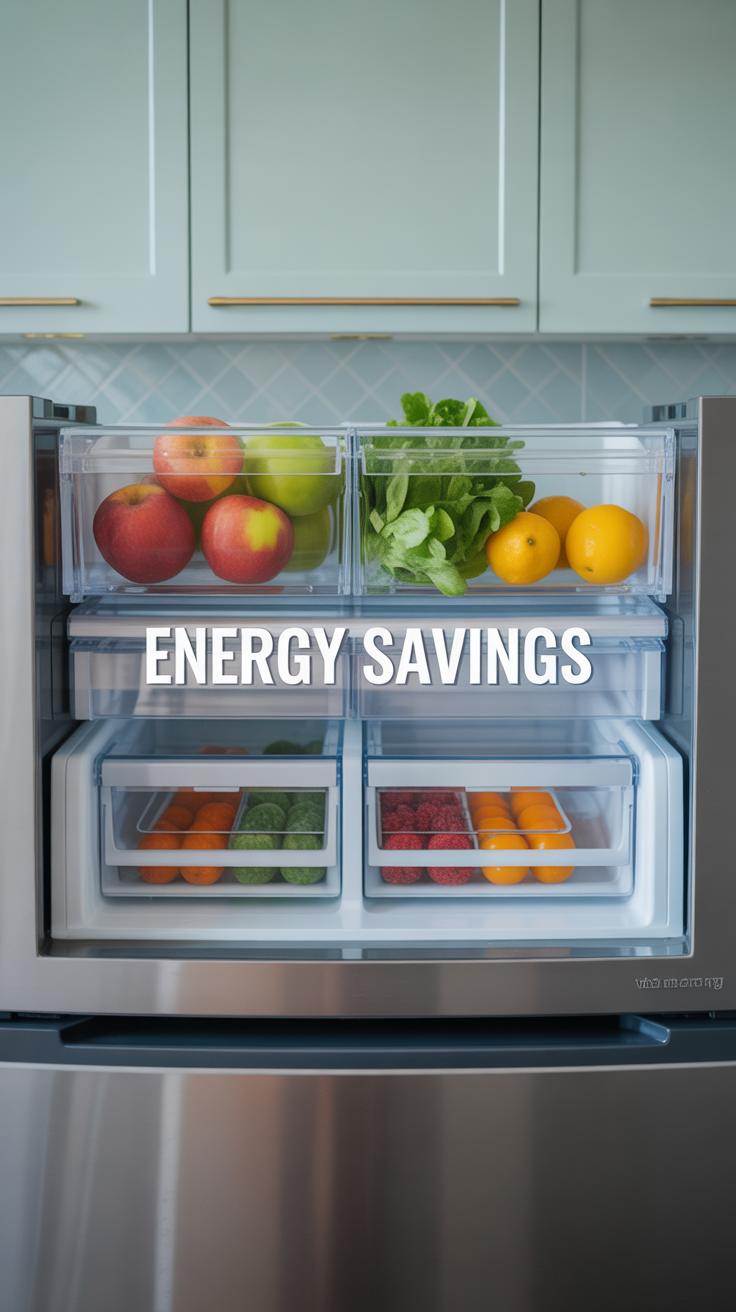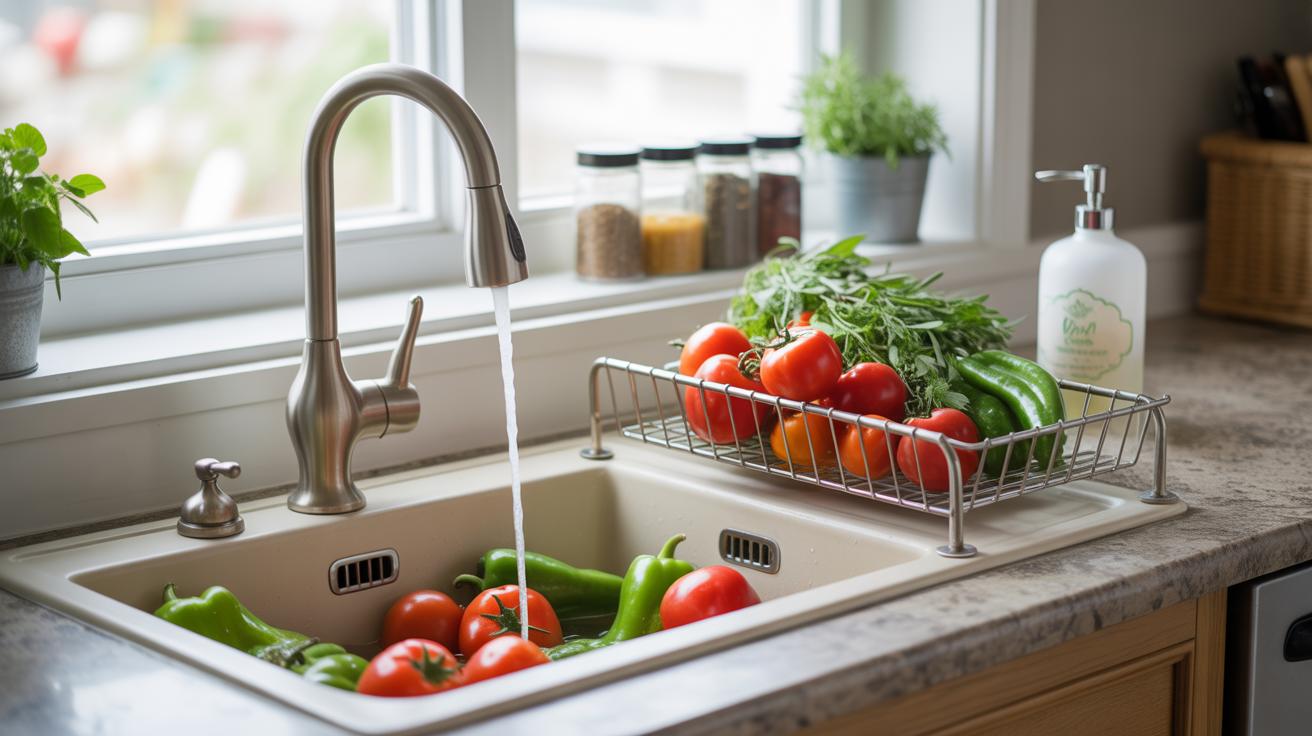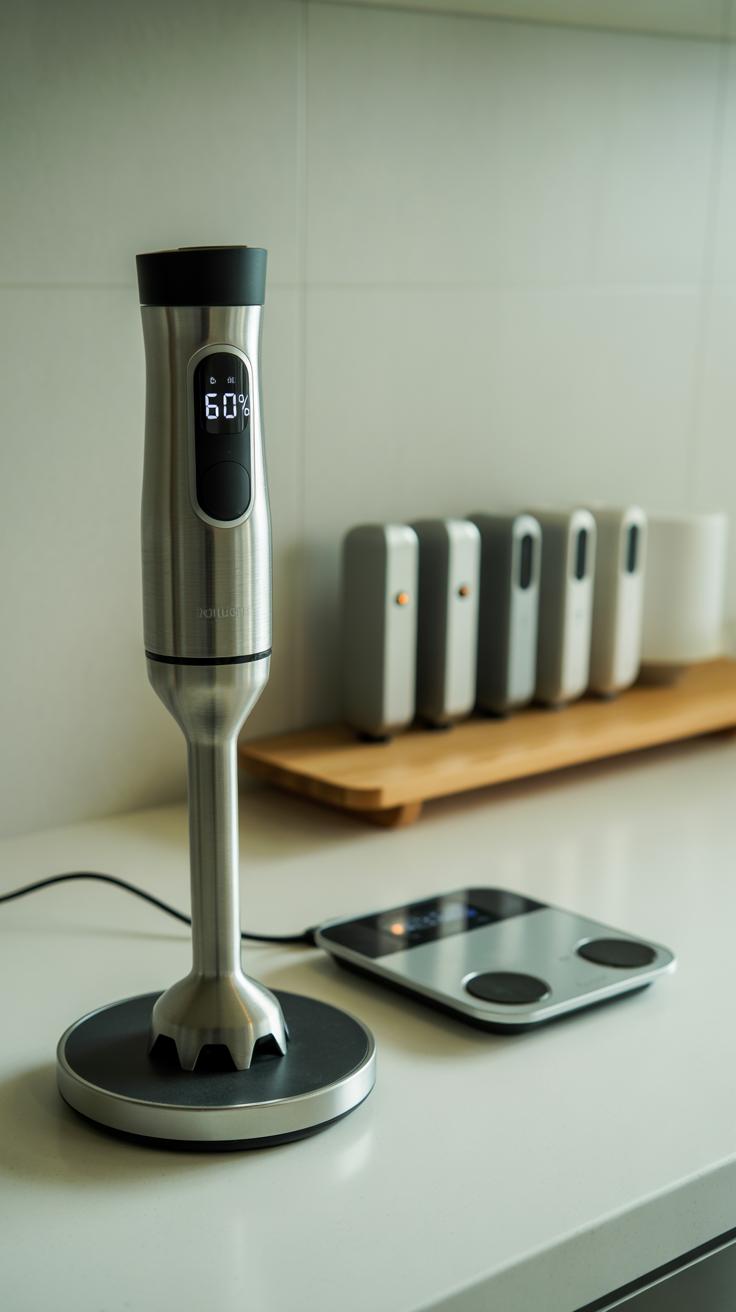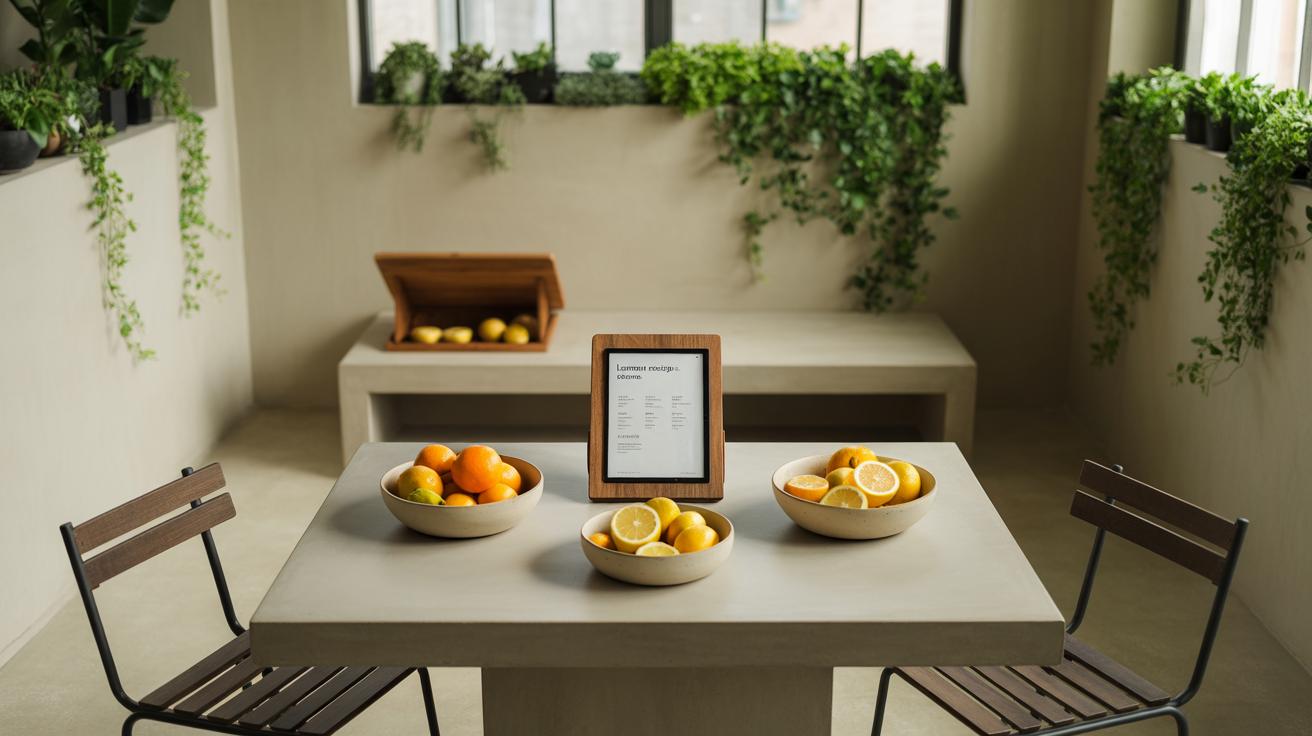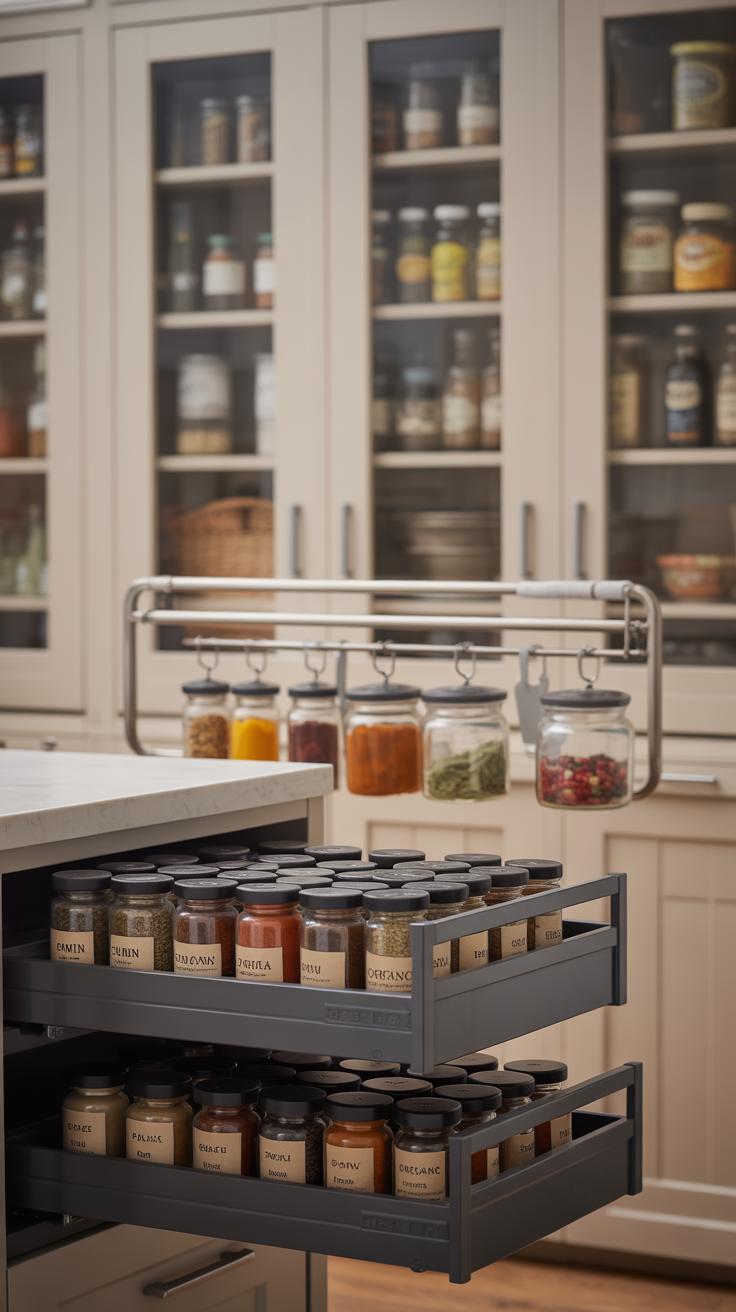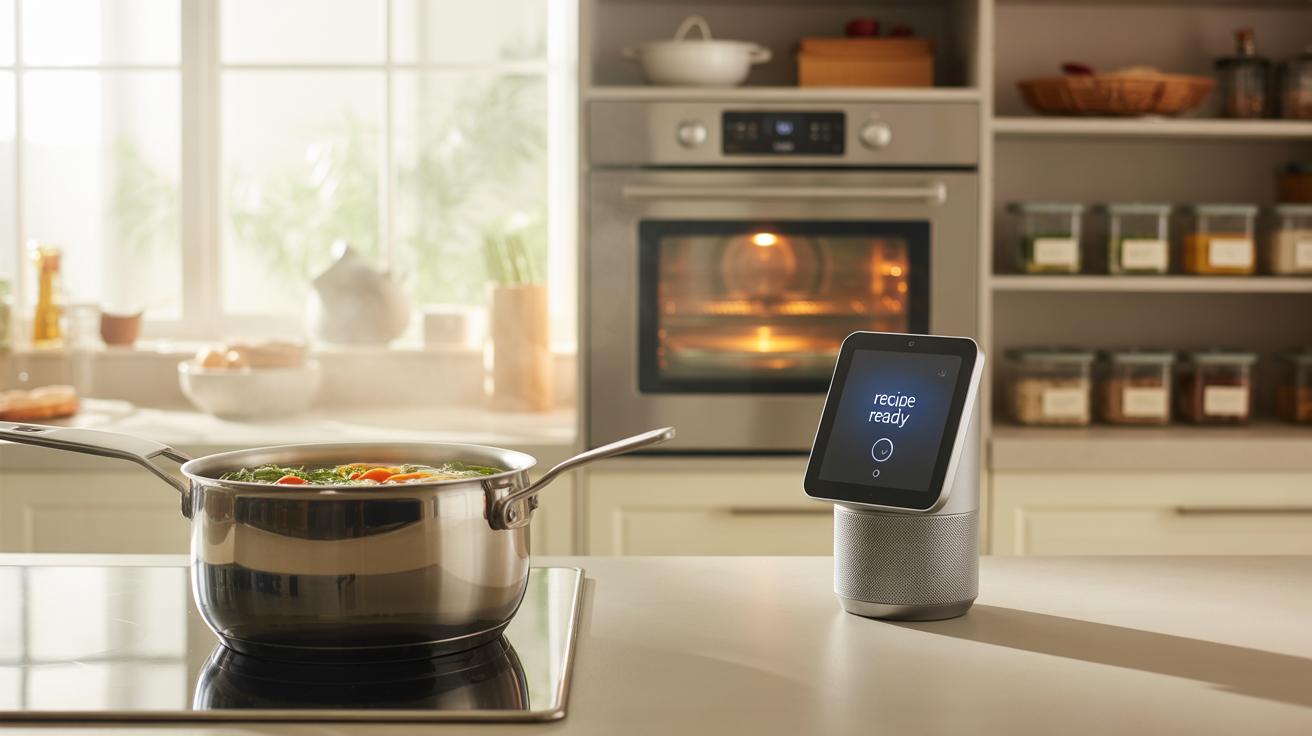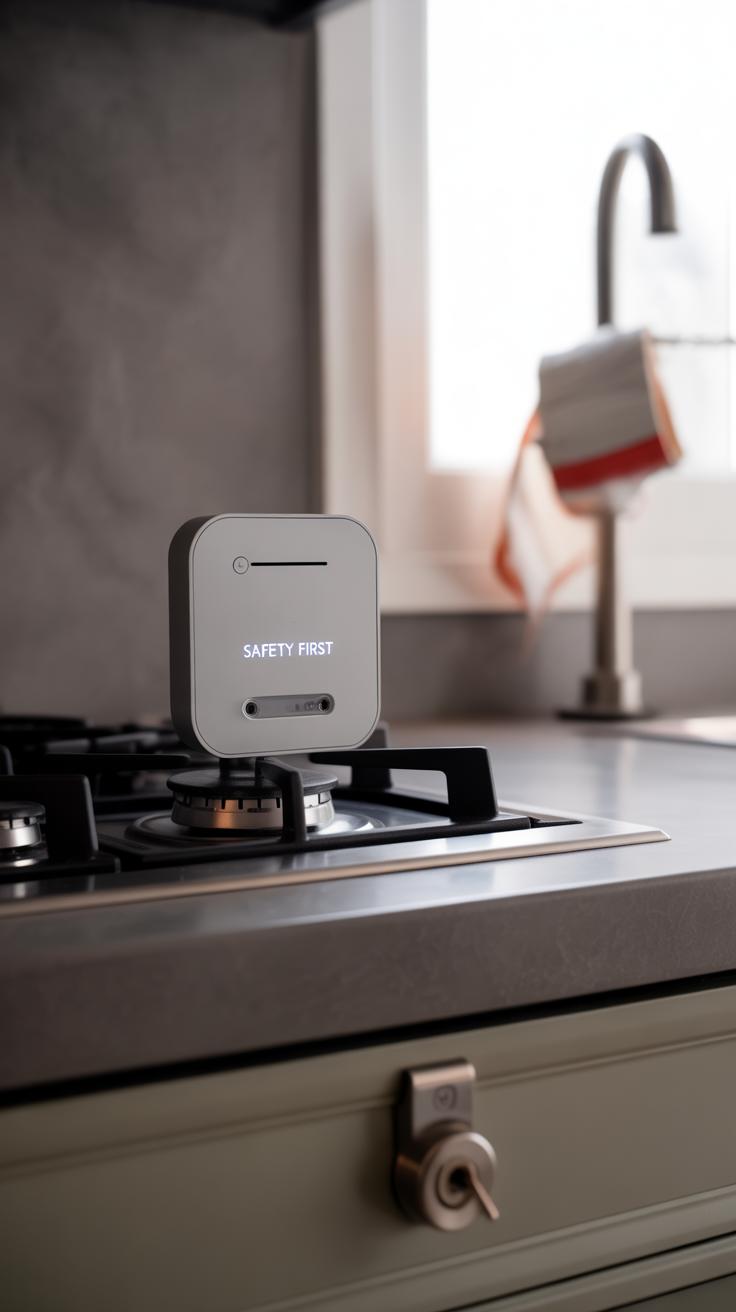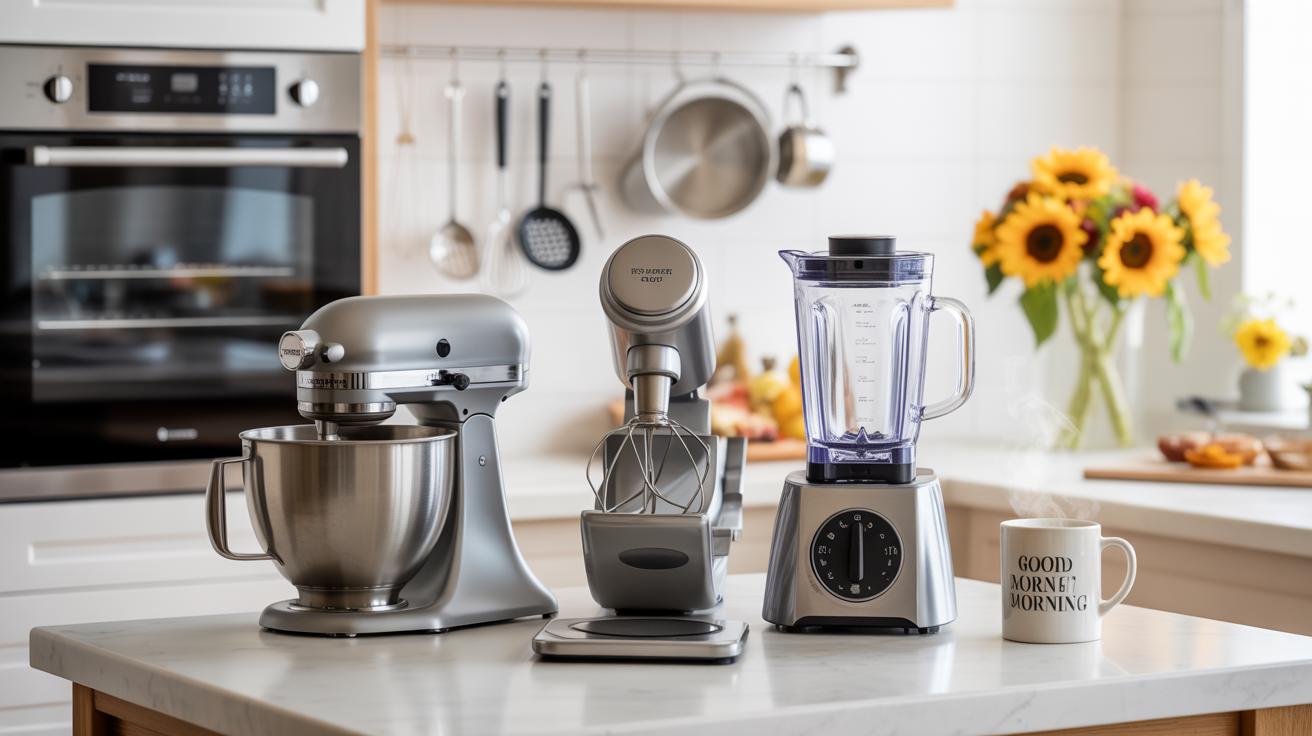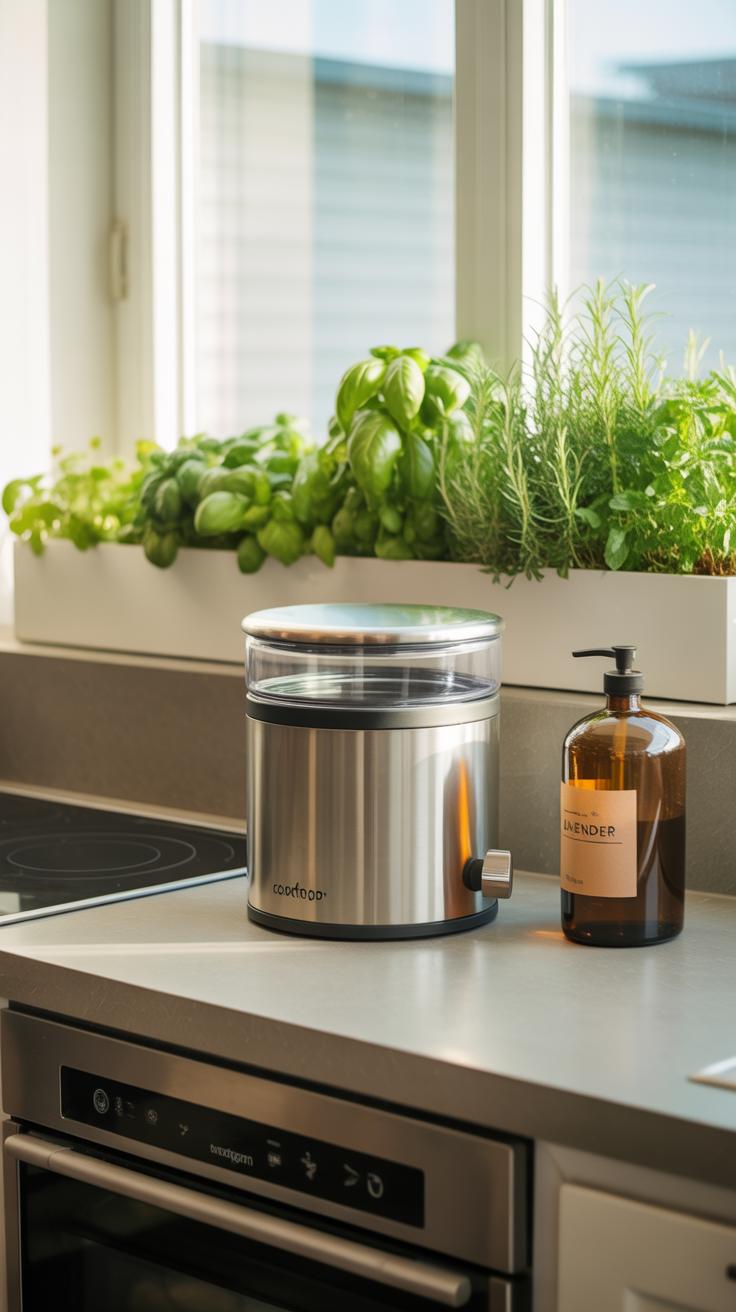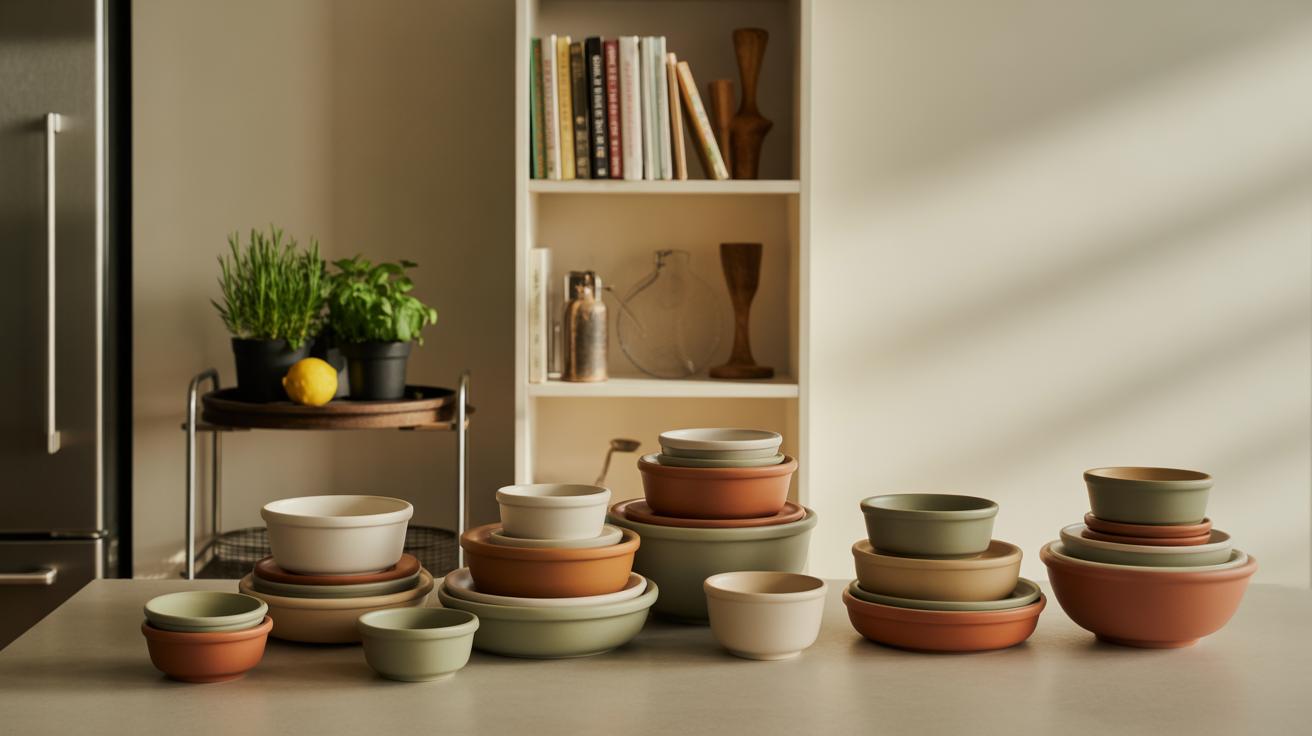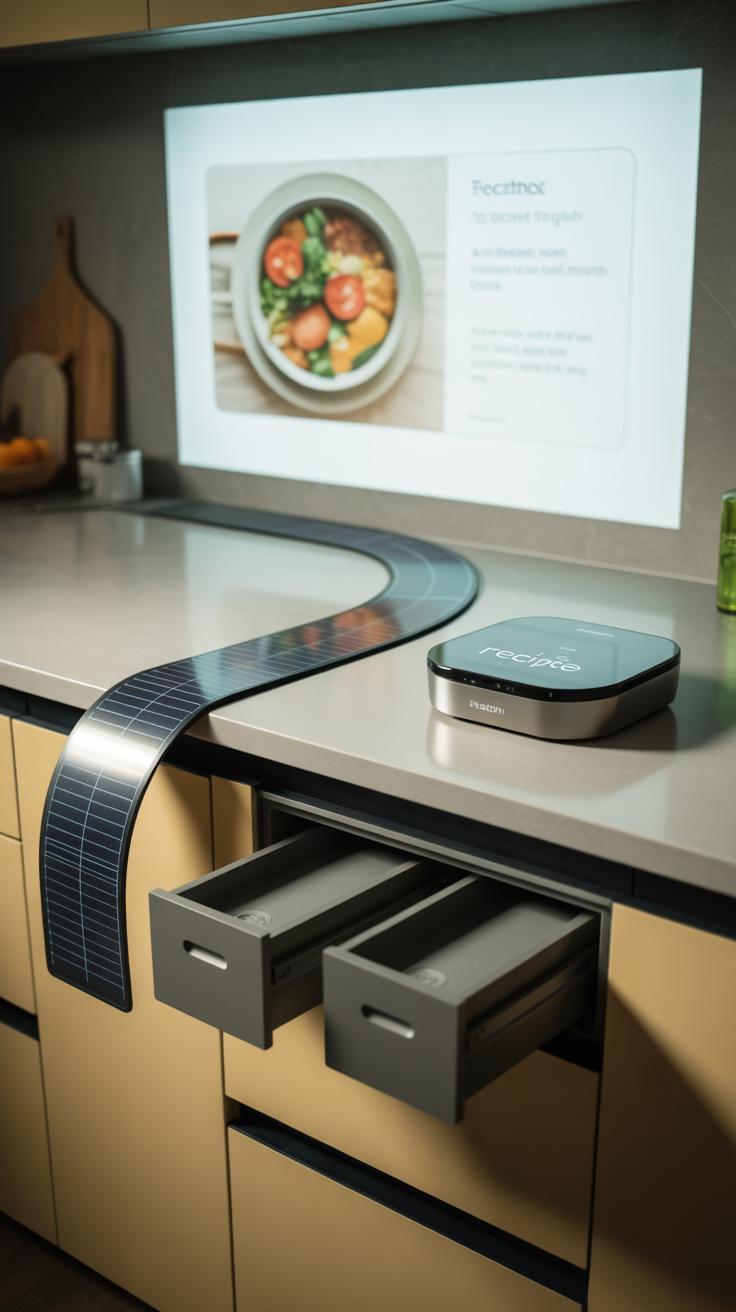Introduction
Welcome to a world where your kitchen is more than just a place to cook. It’s becoming smarter, easier, and full of cool inventions that you can use every day. These inventions are designed to save you time and effort while making cooking more enjoyable.
From simple gadgets to high-tech machines, cool kitchen inventions are here to help you cook better, cleaner, and faster. Let’s explore some of the amazing tools and appliances that you can start using right now to make your kitchen smarter and your cooking easier.
SpaceSaving Kitchen Gadgets
Foldable and Stackable Tools
In a smaller kitchen, every inch counts. Foldable and stackable gadgets offer a way out of clutter without demanding new storage space. Think about a collapsible colander that flattens into a thin disk, slipping easily between pans or plates. Or stackable measuring cups that nest inside each other, much like Russian dolls, but for counting ingredients. These designs keep your drawers neat and make retrieval simple, so you’re not digging endlessly for what you need.
It might seem minor, but imagine reaching for a whisk that folds down to half its size or a grater that shares space with other tools in a stack. These items aren’t just fun, they actually speed up cooking because you don’t waste moments wrestling with bulky gear. I found myself appreciating a folding cutting board that locks open just right and collapses flat for storage — pretty clever, honestly.
Multipurpose Kitchen Tools
Sometimes, space is less about size and more about how many jobs one gadget can do. Multipurpose tools pack several functions into a single item, cutting down on clutter. For example, a kitchen appliance that combines a blender, chopper, and food processor can replace three separate machines. This means fewer cords, fewer counter spots claimed, and less countertop chaos.
But there’s a catch. Tools like these often require a learning curve or feel slightly less specialized than dedicated ones. Still, the trade-off may be worth it—especially if your kitchen is cramped. I’ve used utensils that work as both a spoon and a spatula, and while not perfect for every task, they sure helped when drawer space ran low. Maybe you’ll find them handy too.
Smart Cooking Appliances
Smart ovens have changed the way we cook, though maybe not everyone notices right away. Their Wi-Fi capabilities let you control temperatures, timers, and even cooking modes from your phone. Imagine starting dinner while still at the office or tweaking the oven settings without rushing back home. These ovens often come loaded with presets tailored for specific dishes—pizza, roast chicken, or even delicate soufflés. It’s like having some guidance built in, but you can always override the settings if you want to experiment.
Then there’s the curious case of sensor cooktops. They seem simple at first, but the sensors adjusting heat in real-time do make a difference. They can detect when a pan’s too hot or food starts sticking, then lower the heat accordingly. It’s almost as if the cooktop “listens” to what’s happening without you needing to hover constantly. I’ve tried one, and while it doesn’t replace the instinct of an experienced cook, it certainly helps avoid burning or uneven cooking. You might wonder if this level of automation takes away from cooking skills—maybe, or maybe it just frees you up to focus on other parts of the meal.
Automated Food Preparation Machines
Automated food preparation machines can change the way you approach cooking, especially when you’re short on time or energy. These gadgets handle those repetitive, sometimes messy tasks like chopping, mixing, and kneading, which can feel a bit tedious. I’ve tried a few myself, and in some cases, they freed me up to focus on other parts of the meal without constant supervision.
Food processors, for example, often come with attachments that let you chop vegetables, slice fruits, or even mix sauces—all in one device. It’s not just about speed; the consistency is surprisingly reliable, though sometimes you might want to go back and do a little manual tweaking for texture. You’ll find they’re perfect when prepping large batches, like salads or salsas, where uniform cutting matters.
Then, there are automatic mixers and dough kneaders. If you’ve baked bread or pizza dough before, you know how tiring kneading can be. These machines take over the heavy lifting, creating dough with a texture that’s nearly as good as hand-kneaded. Some even have timers and multiple speed settings, so you can set it up and forget it for a bit. That said, you might still feel the urge to get hands-on occasionally, just to check if it’s done right.
Have you found a gadget in your kitchen that lets you save minutes but still feels like you’re part of the process? It’s a delicate balance between convenience and the little satisfaction that comes from hands-on prep. Either way, these machines push us closer to cooking smarter, if not always easier.
EnergyEfficient Refrigerators and Storage
Energy-Saving Refrigerators
Refrigerators are a staple, but some newer models are designed to cut down power use without compromising how well they keep food fresh. For example, inverter compressors adjust their speed based on cooling needs instead of running flat-out all the time, which—and I think this is key—saves quite a bit of electricity. Some models even have adaptive defrost technology that only kicks in when necessary, rather than at preset intervals. This kind of control may sound subtle, but over the months, it adds up.
I’ve noticed these refrigerators often come with better insulation materials too—though that can feel like a tech detail, it really helps keep the cold in longer when the door’s open. It’s almost like they recognize your kitchen’s rhythm and respond accordingly. The energy label on the fridge isn’t just for show anymore; it often reflects these clever tweaks that can lower your bill. Are we close to refrigerators that power themselves through solar panels? Maybe, but for now, these energy-saving models offer a small change that’s fairly easy to adopt.
Smart Storage Solutions
Storage systems inside these fridges do more than hold food—they actively help keep it fresher. Some have adjustable humidity drawers where you can shift the settings depending on whether you store leafy greens or fruits; this slows down spoilage and gives you more flexibility. Separating ethylene-producing items like apples from sensitive veggies can stretch their life noticeably. A friend of mine swears by this and says it cut her weekly waste almost in half.
Other models feature modular compartments—tiny sections with their own temperature controls or sealed lids designed to reduce cross-contamination and odors. It’s easy to overlook these details, but they do seem to decrease the frequent, frustrating fridge clean-outs we all dread. You might wonder if it’s overkill for daily use, but once you get into it, storing leftovers or fresh herbs becomes less of a guessing game. Smart storage, in this case, feels like a quiet helper rather than a flashy gadget.
Wireless Kitchen Gadgets
Cordless Electric Kettles
Cordless electric kettles have changed how we heat water in the kitchen. Without a cord tethering you to a specific spot, you can fill the kettle anywhere—at the sink or even on a breakfast tray—then just place it on its base to start boiling. It’s a small freedom you might not expect to miss but once you have it, you notice.
These kettles are easy to move around, which helps if you have limited counter space or prefer to keep the kettle out of the way when not in use. Also, some models come with temperature control settings, making it practical if you want water just below boiling for tea or coffee. You don’t have to guess or wait; the kettle does the thinking.
It’s a bit puzzling why we ever put up with cords in the first place, but I guess they had their time. If you like the idea of making your kitchen a little less cluttered and your hot water routine simple, cordless kettles deserve a shot.
Wireless Food Thermometers
Wireless food thermometers bring a great kind of convenience to cooking, especially with meats or dishes needing precise temperature control. You insert the probe into your roast or grill, then monitor the temperature from your phone or a handheld receiver. No more opening the oven or grill repeatedly, which interrupts cooking and wastes heat.
You get alerts when the food hits the target temperature, so you don’t have to hover nearby. It’s perfect for multitasking or entertaining guests while still keeping dinner on track. That said, sometimes the connection isn’t perfect—walls or distance can interfere—but most modern devices work well enough for everyday use.
What I find most useful is how it takes the guesswork out of cooking. You stop wondering if the chicken is done or if the steak is medium-rare. It’s like having an extra pair of eyes—or ears—on your cooking. If you often find yourself pacing between stove and living room, a wireless thermometer might be worth considering.
Kitchen Organization Innovations
Customizable Drawer Dividers
Drawer organization often feels like a puzzle that never quite fits. Customizable drawer dividers offer a pretty neat solution—you can adjust them to match the shape and size of your utensils, which keeps everything from spatulas to peelers in their own spots. I’ve tried fixed compartments before, but they never worked well because my kitchen tools keep changing. These adjustable dividers let you resize or even remove sections when needed.
Some come with soft edges that protect delicate gadgets, while others have nonslip bases so dividers don’t slide around with drawer opening. What’s good is you can see at a glance where each tool sits, so no more frantic digging for that one special spoon.
Still, it can get a bit tricky if you have oddly shaped items or a mix of big and small tools. In those moments, you might question whether dividing is worth it—but overall, most find they save time and frustration daily.
Smart Shelving Systems
Smart shelving changes how you store pantry goods or cookware, making items more accessible and, sometimes, easier to spot. Some designs have pull-out shelves or rotating racks that bring everything forward—perfect for tight spaces where things get lost in back corners.
A feature I liked is adjustable height levels on shelving units. You can shift shelves to fit tall bottles or stack multiple boxes without wasted space. A few modern systems even integrate labeling options or LED lighting so you don’t have to guess what’s hiding in the shadows.
On the other hand, smart shelves aren’t always simple to install or cheap. And if too many gadgets come on one unit, it might feel crowded instead of organized. Still, for those constantly battling clutter, a well-planned shelving system could make your kitchen less of a hassle, even if it takes some trial and error to find the right setup for your needs.
Safety Devices in the Kitchen
Automatic Stove Shut-Off Systems
Have you ever left something simmering on the stove and suddenly wondered if you turned it off? That’s exactly the problem automatic shut-off stoves aim to solve. These systems use sensors to detect when a burner has been left unattended for a certain time. If the flame or heat stays on without any interaction—no stirring, no temperature adjustments—the stove automatically cuts the heat. It’s like having a second pair of eyes in the kitchen, and I think it really eases the worry, especially if you’re multitasking or chasing kids around.
Some models even respond to smoke levels or unusual temperature spikes, preventing possible fires. While not flawless—you still want to stay alert—it’s a helpful safety net. You might wonder if these sensors turn off the stove a bit too soon sometimes. Maybe. But isn’t a little early shutoff better than a kitchen disaster?
Safe Cutting Tools
Knives in the kitchen can be intimidating, especially if children are nearby. There are cutting tools designed specifically with safety in mind—not your usual dull knives, but ones with protective features. For instance, some safe knives have rounded tips and ergonomic handles that reduce slipping. They also come with guards to shield fingers or blades that retract when not in use.
If you have young kids who like to “help” chop veggies, these might be worth a try. They let you teach kitchen skills without constant hand-worry. Of course, no tool is foolproof—a knife is still a knife—but these designs lower risks notably. I’ve seen these safe cutlery sets work well in family kitchens, especially where curiosity runs high but coordination might not be there yet.
Another aspect to consider is the ease of cleaning and sharpening; some safe knives maintain good cutting ability without becoming dangerous over time. It’s a small but meaningful balance to strike, and one that could make your kitchen experience less stressful… or at least less nerve-wracking.
Sustainable Kitchen Technologies
Domestic Food Composter Units
Small composters designed for home kitchens are quietly changing how we handle food scraps. These devices take your vegetable peels, coffee grounds, and bits of leftover food and turn them into compost you can use for your plants—or just dispose of more responsibly. They come in various shapes, from simple bins with ventilation to electric versions that speed up the process through heat and tumbling.
You might wonder if a tiny composter fits in your busy kitchen or if the smell can be managed. Well, many models include carbon filters to keep odors at bay, so your counter doesn’t become a science experiment. And they definitely cut down the volume of what you send to the trash, which feels good on its own. Perhaps it takes some effort initially to get the hang of which scraps belong there, but once you do, it almost becomes second nature.
Water-Efficient Dishwashers
Water-saving dishwashers have come a long way from the older models that guzzled gallons per cycle. Newer machines monitor load size and dirtiness, adjusting water use accordingly. Some even spray water in targeted jets rather than flooding the entire interior, which sounds a bit odd but works surprisingly well.
There are also faucets with sensors that shut water off automatically when you step away, which I’ve noticed can shave off a surprising amount of usage—especially during meal prep or handwashing produce. It feels strange at first to rely on these sensors, wondering if a quick move will interrupt water flow, but you get used to it. They make you think about how much water you lose without noticing, prompting you to save more without really trying.
Future Trends in Kitchen Technology
AI Cooking Assistants
Imagine having a device that not only reads out your recipe but also adjusts the cooking time based on how your food looks or smells. That’s what AI cooking assistants aim to do. These smart gadgets watch over your food, suggest tweaks, and even warn you if something’s not quite right. Some can recognize ingredients you have at home and recommend dishes accordingly.
For example, say you’re trying a new recipe and suddenly realize you don’t have an ingredient. Instead of halting, an AI cooking assistant might suggest a substitute or modify the instructions right then and there. It’s like having a patient sous-chef who never gets tired of answering your questions. Though, sometimes I find they get a bit too cautious, suggesting long cooking times or conservative seasoning.
These assistants are steadily improving, but I wonder how much we’ll still want to rely on them instead of trusting our own instincts. Will they guide home cooks or replace some of the joy in experimentation?
Internet of Things in Kitchens
Connecting your fridge, oven, coffee maker, and even your trash bin through the internet opens up a world of small but useful conveniences. Appliances “talk” to one another, sharing info to simplify your day. For instance, your fridge could remind you to buy milk, then update your smart oven to preheat at just the right moment based on your daily schedule.
With IoT, automation grows more practical. You might set your dishwasher to run at night when electricity rates are lower or get alerts if your freezer door accidentally stays open. Yet, I sometimes wonder if this connectivity adds more complexity than ease—like when devices glitch or updates change how things work.
Still, that ability to monitor and control kitchen gadgets remotely can be a genuine time-saver. You could start boiling water from your phone while stuck in traffic or check if you left the stove on after leaving home. It’s useful, sure, but I have to admit—it also might encourage over-reliance on technology in simple kitchen tasks.
Conclusions
Smart kitchen inventions make daily cooking simpler and more pleasant. They help you save space, time, and energy. Whether it’s a small gadget or a high-tech appliance, each invention has a specific role in improving how you prepare your meals.
By adopting these cool tools, you can enjoy cooking more and worry less. Your kitchen becomes more efficient, safer, and fun. Try some of these inventions in your home and see the difference for yourself.

